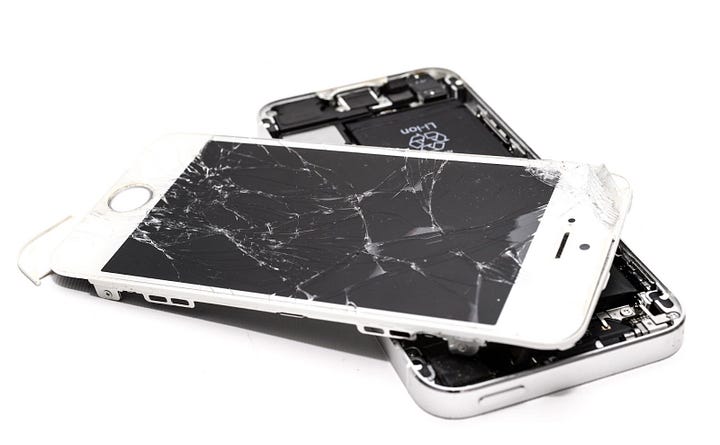Business inventory 101: the good, the bad, the costly

Manufacturers, wholesalers and retailers alike will tell you that their business inventory—defined as their stock of products—is one of their most valuable assets. After all, if you have zero inventory, you will have nothing to offer your customers. The result? Zero sales and income.
Running a profitable product-oriented business requires healthy levels of inventory. This means getting good at understanding the law of supply and demand as well as being prepared for the many uncontrollable factors that affect this relationship, such as consumer behavior and trends, inflation, government regulations and taxes, among others.
We can’t do anything about these unpredictable factors, but we can educate ourselves on proper inventory management strategies to help us mitigate their risks. A good start would be knowing which types of inventory are good and harmful for your business.
Inventory insights
As your business grows, you’ll come across situations that will reveal to you some gaps in how you manage and understand your inventory.
You may have ordered way too much supply of a particular product and felt pressured to sell them all, even at break-even or at a loss. You may have ordered a smaller quantity for a product that your customers are looking for, eventually losing them to your competitors who carried more stocks of that same product. And so on.
Aside from challenging your inventory forecasting skills, these situations also teach you that not all inventory is good for your business. The fact that you have pallets of an item in your warehouse is not always and not necessarily a good thing. There are certain types of inventory that are helping you achieve your business goals just as there are types that are pulling you away from them and costing your business more money than they should.
But here’s what we discovered: searching for “types of inventory” online will usually yield the following results:
- Raw materials inventory
- Work-in-progress inventory
- Maintenance, repair and operating (MRO) inventory
- Finished goods inventory
These are all correct as they are also types of inventory in business. But there’s another classification of inventory that we need. The one that answers the question: “Which types of business inventory are helpful and harmful for my business?”
That is exactly the question that we tried to answer in this article.
You’ll see below the different types of inventory which we classified according to whether they are beneficial (the good), detrimental (the bad) and financially burdensome (the costly) to your business. To enlighten you further, we gave relatable examples for each type and explained why they belonged under each of these categories.
The good
Anticipation inventory
Anticipation inventory, as the name suggests, refers to inventory that business owners keep in anticipation of or in preparation for a surge in demand for their products during an upcoming campaign or sales event. These campaigns and sales events usually coincide with holidays and celebrations such as Christmas, Father’s Day and Mother’s Day, to name a few.
Anticipation inventory is also called smoothing inventory. If we use a line graph to represent your customers’ demand for your product, then a sudden spike in demand for your product will be represented by a peak. Your smoothing inventory is meant to smooth out these sudden fluctuations to ensure your business can accommodate these seasonal surges in demand.
A good example of anticipation inventory would be the additional bouquets of roses that florists keep in their shops days before Valentine’s Day. Another example would be the boxes of products that e-commerce stores stock up on in preparation for Cyber Monday.
Why this is good: Anticipation inventory helps minimize your chances of running out of stock for popular products and missing out on many sale opportunities during periods where your customers are most likely to buy. Planning ahead for these seasonal celebrations and referring to your past sales data can help you forecast with better accuracy how much anticipation inventory you should keep in your warehouse.
Buffer inventory
Buffer inventory (also called buffer stock, contingency stock or safety stock) refers to inventory that business owners keep in case of emergencies, unexpected delays in shipment and unforeseen spikes in demand. They come in handy for any unexpected situation that may arise and disrupt your order fulfillment process.

Why this is good: Like anticipation inventory, buffer inventory lessens your risk of experiencing stockout and losing revenue during times that your customers are ready to buy your product. Buffer inventory also ensures you have enough supply to offer your customers should something go suddenly wrong in your supply chain, such as transportation delays caused by protests of cargo drivers, for example. Lastly, keeping buffer inventory enables your business to serve more customers at the time of their greatest need and positions you ahead of your competitors.
Healthy inventory
Healthy inventory refers to inventory that has not yet aged and is still within the “healthy age” parameters. The experts’ recommendation of a healthy age of inventory is 30 to 60 days but some extend it to 90 days. Clearly, these figures only apply to non-perishable goods such as books, consumer electronics and fashion accessories. Perishable food items such as bread, fruits and vegetables have a much lower threshold.
It is worth noting that different industries and companies have their own standards for how long a product should stay on their shelves. The above figures are just general recommendations and should not be viewed as the rule.
If we are to follow these recommendations, then an example of healthy inventory would be freshly harvested bananas which you sold within a week after receiving it from your farmer supplier. Another example is a box of T-shirts which you sold one month after the wholesaler delivered it to your warehouse.
Why this is good: Healthy inventory is more profitable than aged inventory. Since they are fresher and newer stocks, you can maximize your profit on these items more than with the older items in your warehouse. Products that fall within your healthy inventory category are also more attractive to your customers and thus, easier to sell, as consumers typically prefer items that are new and have just arrived in stores.
The bad
Dead inventory
Dead inventory, also known as aged inventory, dead stock or obsolete inventory, refers to inventory that a business can no longer sell. Products unsold for more than 180 days are generally considered dead stock, but as with healthy inventory, it is ultimately up to the company itself to decide what makes their inventory dead or how many days it should spend in the warehouse before it can be classified as dead inventory.
The reasons why inventory becomes unsellable may include:
- changes in customer preferences
- damages to the product itself
- expiration
- flawed inventory forecasting and management
- sudden shifts in the economic and political environment

A fairly recent and local example of dead inventory would be face shields. Here in the Philippines, face shields were initially required by the government to be worn on top of face masks to curb the spread of the coronavirus. But last November 2021, then-President Rodrigo Duterte announced that the use of face shields is no longer mandatory in many parts of the country. Businesses selling this particular protective gear were caught off-guard by his announcement and suddenly left with stocks of face shields that are no longer needed by the public.
Another example of dead inventory would be fruits containing worms and leafy vegetables infested with pests. These are no longer safe for consumption and are considered unsellable.
Why this is bad: Dead stock represents investments that are impossible to recover. Unless you can find buyers for your outdated, expired or damaged stocks—who will usually buy these goods at extremely low prices—the chances that you could get a return on your investment for these items are almost non-existent.
On top of selling these items at a loss, carrying dead stock also increases your inventory carrying costs (all costs related to storing unsold items, including depreciation, handling, insurance, opportunity costs, shrinkage, taxes, transportation, wages and warehousing) and takes up precious space in your warehouse—space that could’ve gone to your other products that actually bring in money to your business.
Dead stock also comes with health and safety risks. Perishable items left rotting on your shelves will attract pests like cockroaches and rodents, which may also jeopardize the quality of your healthy inventory. Damaged items may also compromise the safety of your staff while they are transporting and storing them. From leakage to detachment of parts that could result in trips or falls, storing broken items may lead to accidents in your warehouse and increase your liabilities.
The costly
Aging inventory
Aging inventory refers to inventory that is no longer considered healthy but is not yet old enough to be considered dead or obsolete. If we are to follow the general recommendations for the healthy age of inventory and dead inventory, then aging inventory would be stocks that have been in your warehouse between 60 or 90 days and 180 days.
Aging inventory is also called slow-moving inventory: items that do not sell as quickly as you predicted and have a slow turnover rate.
An example of aging inventory is the stock of raincoats and rain boots in a department store after the summer season began. Since the demand for these items is low during the summer months, you can expect them to stay in your warehouse until the rainy season comes and the demand for them picks up again. A second example of aging inventory would be outdoor sports and recreation equipment during the height of the coronavirus pandemic. Since many governments mandated their citizens to stay at home during this time, these outdoor equipment were left to age in warehouses until restrictions eased and people were allowed to spend time outdoors again.
Why this is costly: The older the age of your inventory, the more expensive it becomes. Of course, carrying any type of inventory comes with its own costs, but the caveat with aging inventory is there’s a fair chance you will not be able to recover your investment.
Aging inventory is usually sold for less than their retail price, which means less profits for your business. Generally speaking, customers have a preference for newer items, unless they’re into outdated or vintage products. If you have a lot of aging items, then that means your business is at risk of losing money and having a negative bottom line.
Excess inventory
Excess inventory, also called overstock, refers to inventory with a quantity that exceeds the actual demand of your customers. This is usually the result of inaccurate forecasting of consumer demand and poor inventory management.
In the case of a grocery store, an example of excess inventory would be boxes of chocolate-flavored cereals. Considering how health-conscious today’s consumers have become, these chocolate-flavored cereals may be ignored by your customers who are looking for healthier, whole grain cereals instead. Another example of excess inventory in this scenario would be cases of artificially-sweetened drinks and sodas.
Why this is costly: Similar to aging inventory, excess inventory results in smaller profit margins and additional costs. Businesses typically hold clearance sales and mark down the prices of their excess inventory just to break even or recover a fraction of what they spent on these goods.
Carrying stocks of products that your customers no longer need or want does not make business sense at all. Aside from incurring costs that might be difficult to get back, they also take up warehouse space that is better reserved for items your customers actually need and will pay for. This may explain why some businesses throw away or destroy their excess inventory; in the process, they completely eliminate their chances of recovering value from these items while damaging our planet.
Mind your inventory
Regardless of the industry you belong to or the product you are selling, bear in mind that effectively managing your inventory is critical to the success of your business. Knowing which types of inventory are helpful and harmful to your business will help you stay profitable and competitive in this fast-paced and ever-changing environment.

